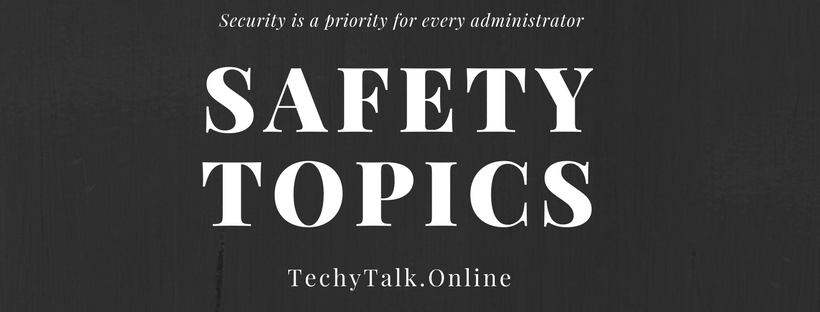
Safety Topics
Safety Topics: Security is a priority for every administrator, but it cannot be the only priority: security cannot forsake all others. One of the other priorities that CompTIA wants you to be familiar with for this exam is safety.
Most of the topics that fall beneath their definition of safety have been discussed in earlier articles, but even those bear repeating here.
Some of the topics relate to the safety of the data or physical environment, while others are associated with safety of the individuals you work with.
In the order the topics appear in the objectives, there are the followings:
Fencing: Fencing is used to increase physical security and safety and was discussed in earlier articles. A fence can keep out unwanted entities—vehicles, people, etc.—and funnel those leaving to an easy to manage exit point where you can manage them easier.
Lighting: Like fencing, lighting can aid greatly with physical security. An area that is not well-lit can be more easily compromised than one which is.
Locks: Locks are a lot like passwords—they need to be easy enough to work that those who are authorized can effectively navigate them but strong enough to keep those who are not authorized out.
As a general rule, the strength of locks and the costs of them are closely related. Be sure to lock up not only the server room but also the wiring closets and physical hardware that could wander off.
CCTV: Closed Circuit TV (CCTV) surveillance can help lessen the success of unauthorized access attempt. To be successfully used in prosecution, the recording equipment used with the cameras should be of a good quality. To deter attempts, employees—and all others—should be made aware of the presence of the cameras.
Escape Plans: With all the fencing, locks, and building lighting that is installed in the office, it is highly recommended that escape plans be in place and understood by all.
Someone (a designated safety officer) should be responsible for keeping the plan current and making certain all employees are aware of it.
Drills: To make certain not only that employees know the escape plan(s) but that is also works, drills should be conducted on a regular basis.
The Safety office in charge of the escape plans should also be responsible for the drills and make modification as conditions change or problems arise.
Escape Room: the aforementioned escape plan and drills should direct the employees to safety via an escape route. Alternate routes should be identified in the event that the primary escape route is blocked.
Testing Controls: Controls comes in three types, Technical, Management, and Operational. Since there is reliance by at least two of these types on individuals, regularly test to verify that they are working properly and response are appropriate.
Keep safety as one of your priorities as an administrator. Hope that you need have to respond to an emergency situation, but take comfort in knowing that your employees know how to respond should the need arise.



